Do you have a fear of missing out?
Recently, through social media and text-messaging technology, people have popularized the idea of “FOMO” as an almost-humorous acknowledgement of the “fear of missing out” on social engagements.
Through July 11, Lakewood artist Erika Jaeggli is hosting a charcoal art exhibit at WAAS Gallery that explores the darker side of “FOMO” — the anxiety and sense of dread that threatens the self, convincing you that you do not really exist if you are not socially engaged.
Here are a few samplings from the exhibit with a behind-the-scenes look at what Jaeggli had in mind when she created each piece:
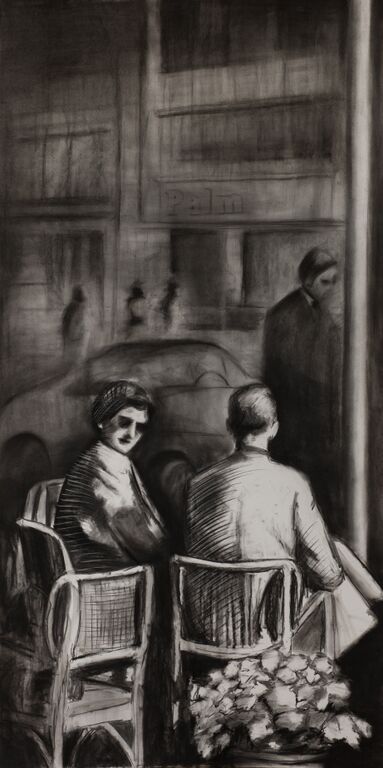
Erika Jaeggli: “The source material came from all over the place. I bought postcards on Ebay, mostly from Europe mid-century. These people are from a postcard from Berlin. The people weren’t the focus at all (of the postcard), but I loved that she was looking towards us and he wasn’t. I made the background darker and brought them into focus.”
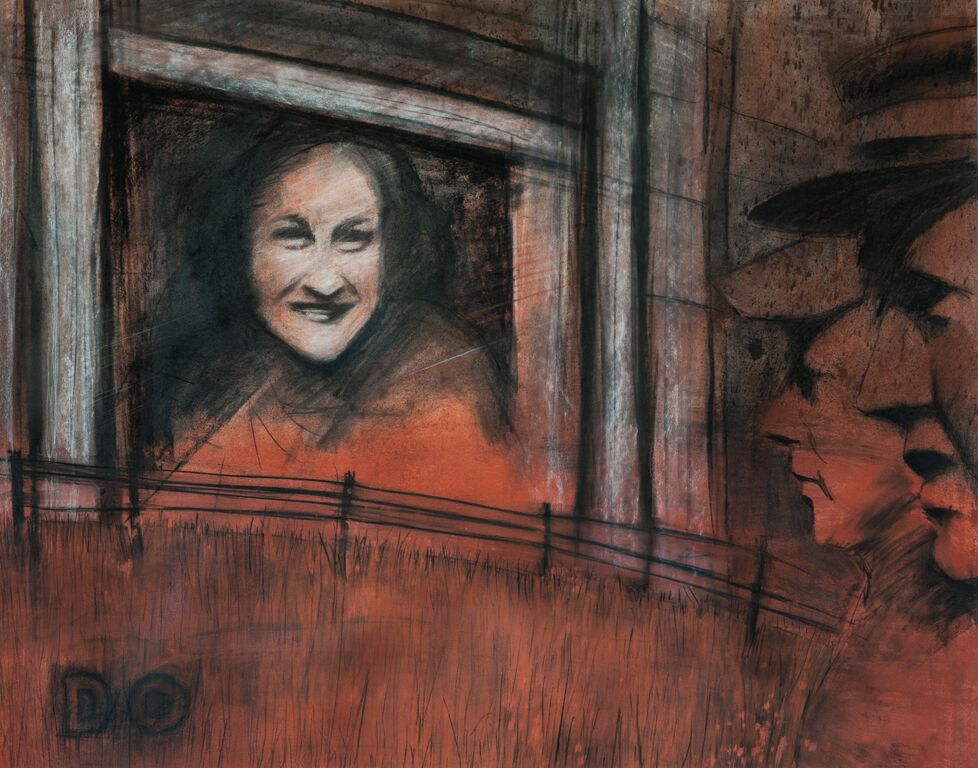
Erika Jaeggli: “In all the pieces, there is either someone looking out of the picture or into the picture. In this one, she’s looking out from the window but not at the viewer. There’s a whole story that’s going on. With the ‘FOMO’ concept, she’s looking out the window, and she’s inside the picture but not really a part of the picture.”
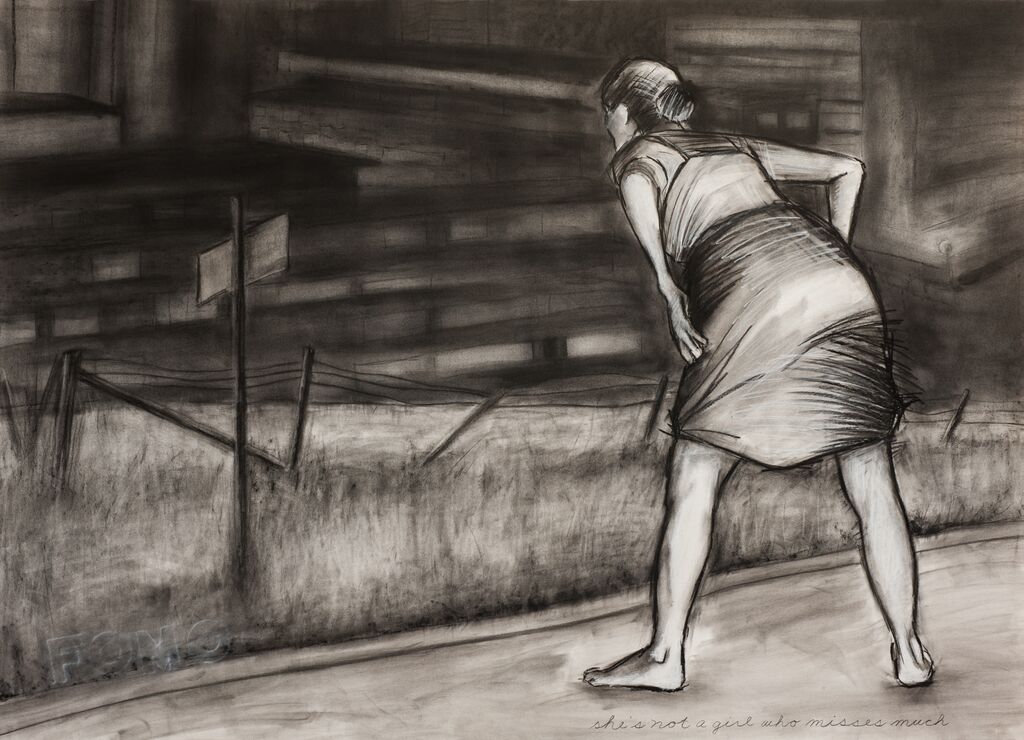
Erika Jaeggli: “These two (this piece and the next one), I did them at the same time. I wanted a really strong picture of a woman looking into the picture. Because she’s treated differently than the rest of the background, she serves as a surrogate for the viewer. She’s not really in that world. She’s more in our world, so it’s like we’re looking too. Both of the quotes are from songs. The first one says, ‘She’s not a girl who misses much.’”
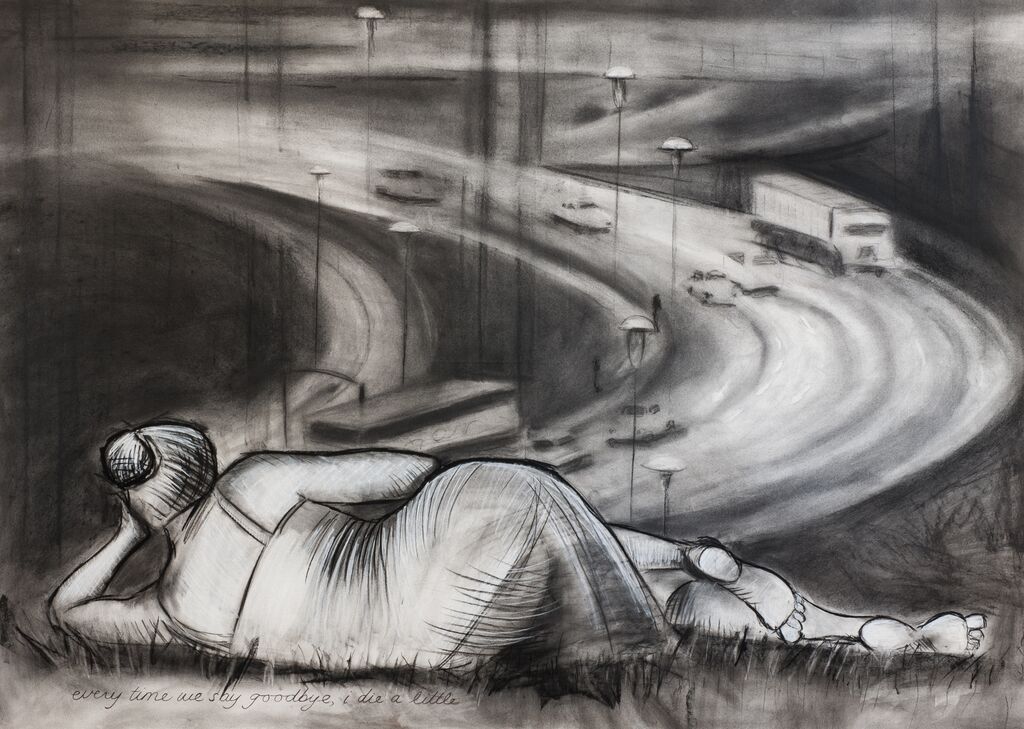
Erika Jaeggli: “I wanted a really strong picture of a woman looking into the picture. Because she’s treated differently than the rest of the background, she serves as a surrogate for the viewer. She’s not really in that world. She’s more in our world, so it’s like we’re looking too. Both of the quotes are from songs.”
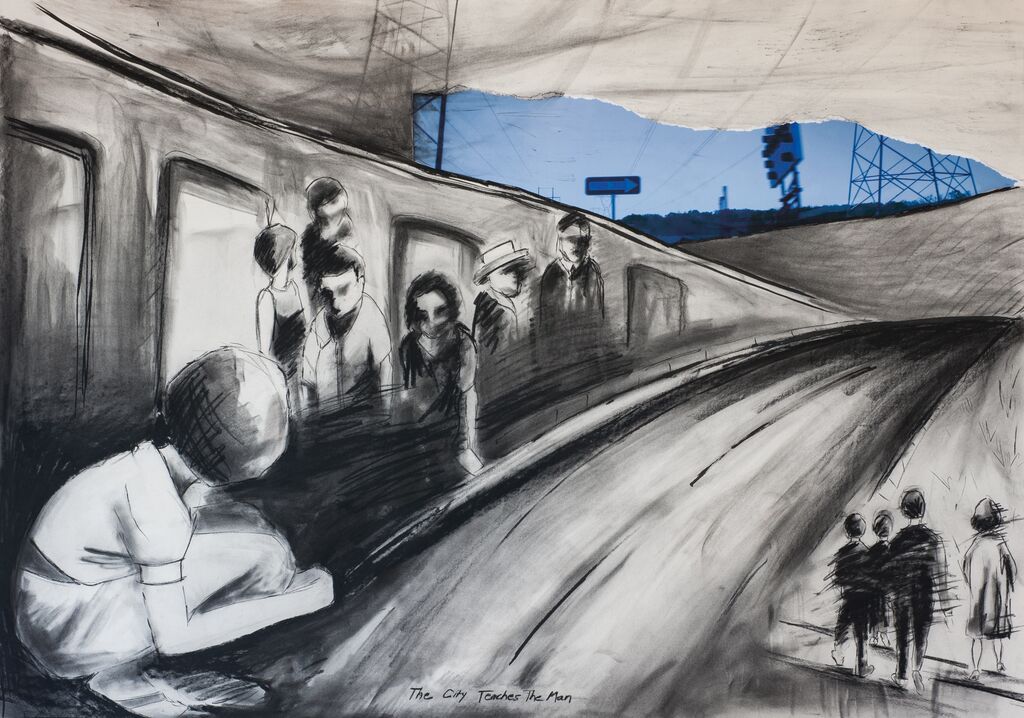
Erika Jaeggli: “This is the first one I did out of the whole series. I have done a lot with roads in the past, and so I wanted to do a person on a road, and these are people coming out of a subway or something. It’s deliberately left open-ended. And then you have this sort of rural area in the background and this person looking in. This quote is from a Greek proverb, ‘The city teaches the man,’ which I love because it’s almost a double-meaning. For me, the city did teach me when I lived in New York City. But it’s also like, ‘The city teaches man’ — this idea that it’s still kind of a man’s world.”
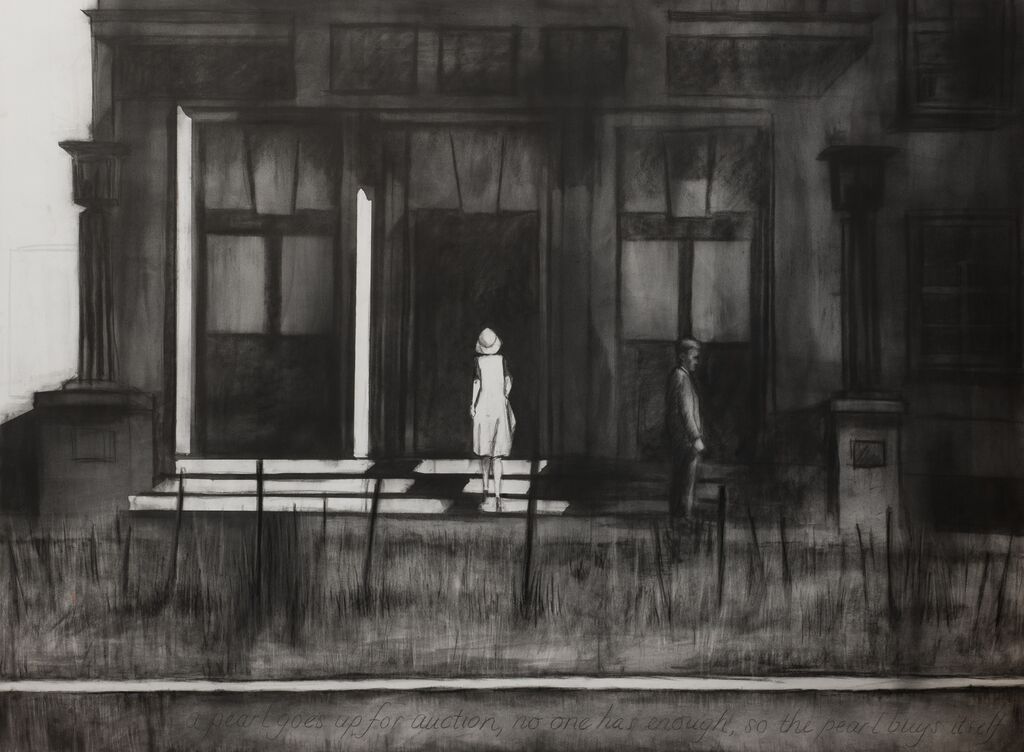
Erika Jaeggli: “The quote is by Rumi, ‘The pearl goes up for auction. No one has enough, so it buys itself.’ Again, that could be interpreted a million different ways, but for me it was that you put yourself out there, looking for validation, but no one is going to live up to your own standards. So you have to fulfill your own destiny. That’s what that meant. So it’s a woman walking up the stairs, taking the lead.”
Learn more about Jaeggli and her work on her website and Facebook page. For more artwork like what you see here, drop by her exhibit at WAAS Gallery, located at 2722 Logan St, through June 13. Call the gallery at 626.731.5683 for more.





